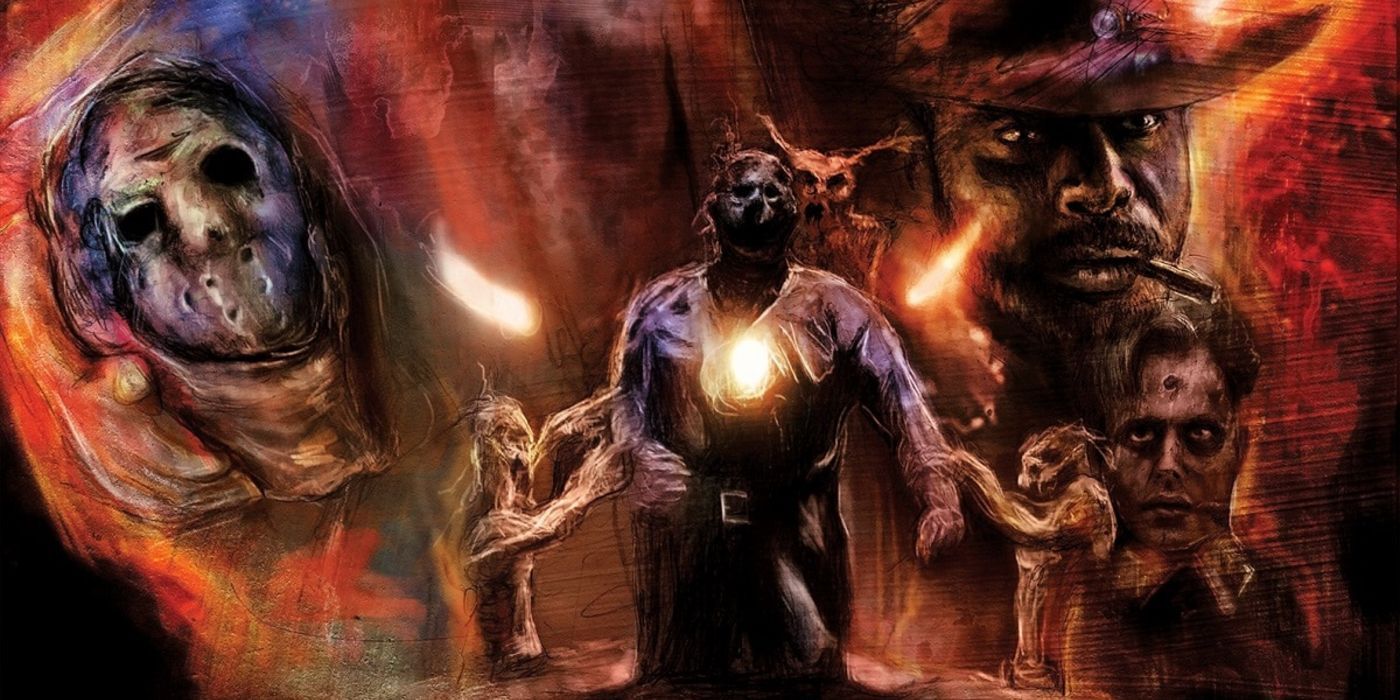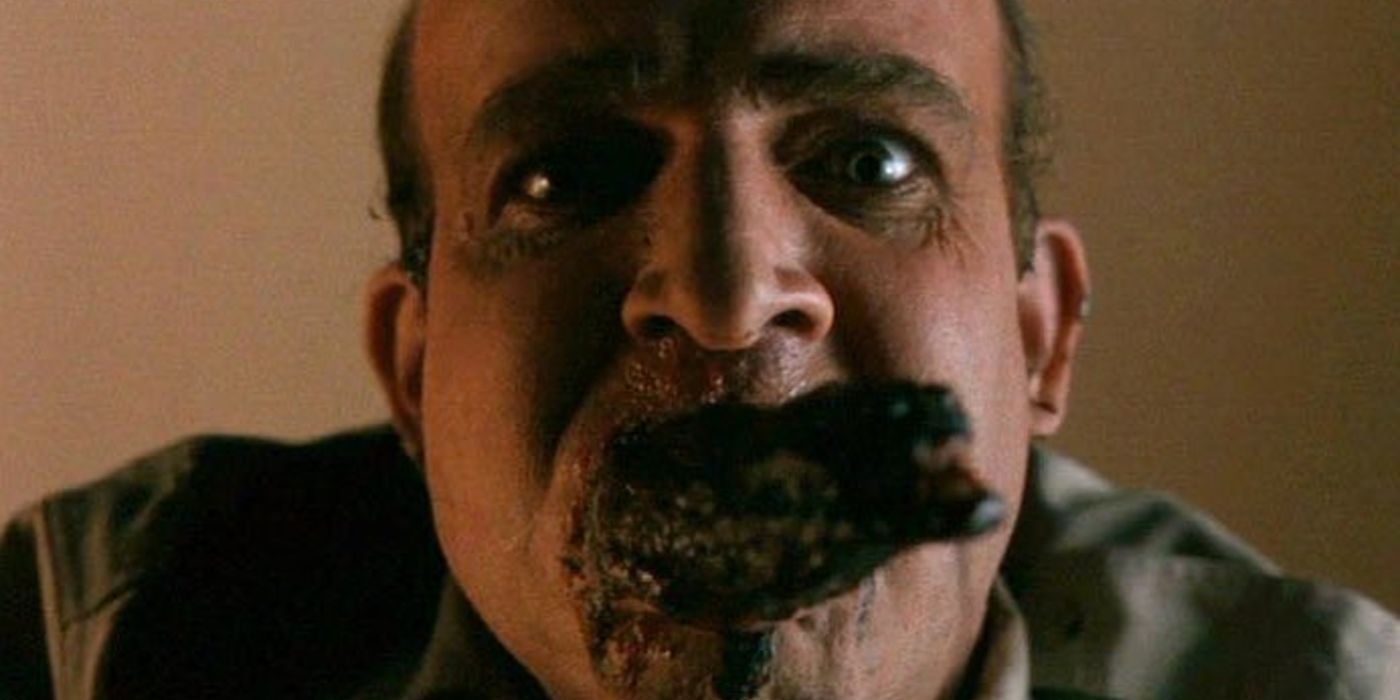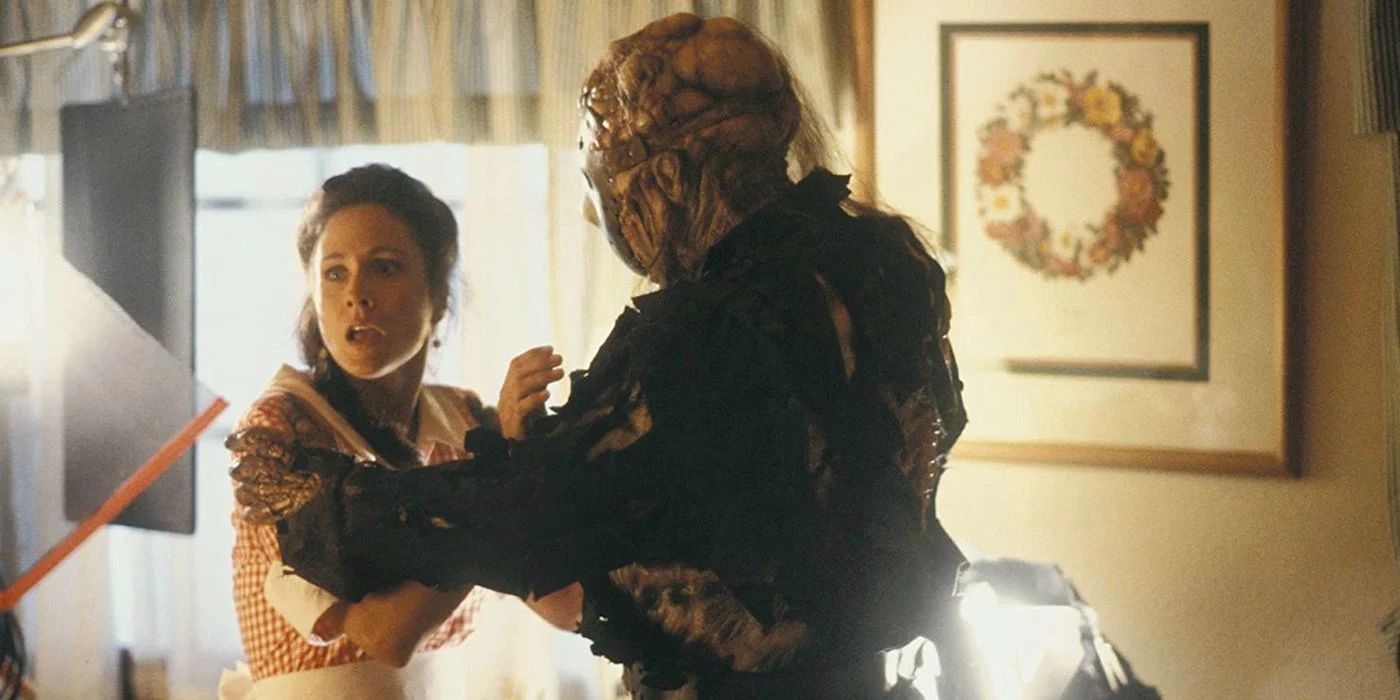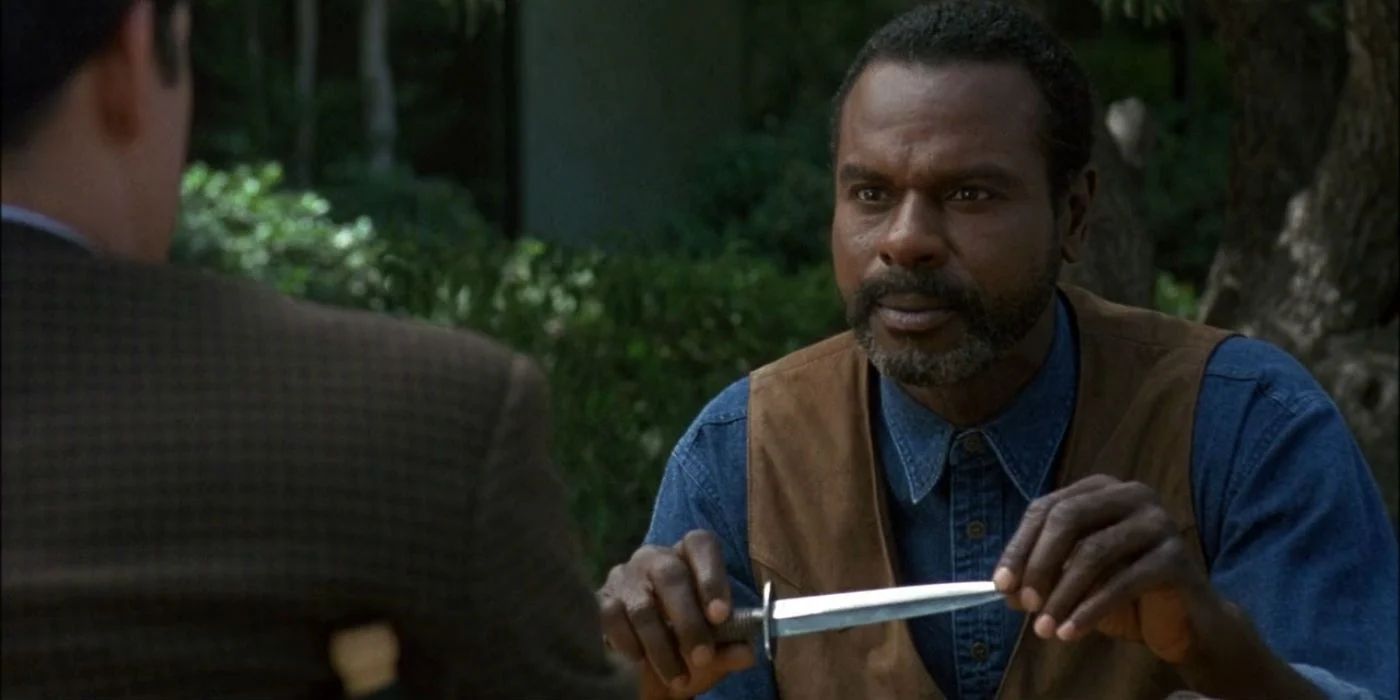Widely considered the worst movie in the Friday the 13th franchise, Jason Goes to Hell has numerous glaring errors that could easily be fixed — here's how. Jason Goes to Hell is the ninth installment in the series and was directed by Adam Marcus and produced by Sean S. Cunningham, the director of the original Friday the 13th movie. With a highly convoluted plot that totally retcons Jason’s backstory and the events of the movies that came before it, Jason Goes to Hell tried a lot of new things, but ultimately fell flat.
The movie follows Jason Voorhees as his body is completely destroyed by the FBI. Afterward, his spirit inhabits the bodies of several people as he makes his way back to Crystal Lake in search of his sister’s family so he can be fully reborn in a body that shares his bloodline. However, most of the movie focuses on the husband of Jason’s niece, Steven Freeman, who sees his mother-in-law killed in front of him and has to figure out how to fight Jason in order to protect his wife and infant daughter.
Jason Goes to Hell’s biggest downfall is a desire to do too much and change too many aspects of the traditional Friday the 13th formula. One or two changes might have worked, but there’s just too much going on in this movie. So, what could Jason Goes to Hell have changed that might have ultimately made the movie a success?
The Possession Angle
The biggest complaint that fans have about Jason Goes to Hell is the possession angle — the whole premise of this movie that separates it from other entries in the Friday the 13th series. It’s clear that the writers and director wanted to do something different in this film. However, changing Jason Voorhees so much that he’s now an evil spirit moving from body to body and following a bloodline makes no sense based on everything that’s happened in the eight movies leading up to this one. Additionally, the possession angle means that Jason spends almost no time on screen, and almost all the kills are carried out by other random people that Jason’s spirit has inhabited. While this might have been an interesting concept to explore in a standalone movie, changing everything about the Friday the 13th formula nine movies in was a really poor decision.
The best way to fix this aspect of the movie would really be to cut it out altogether. Jason’s body gets blown to pieces in the opening sequence, but his heart survives. Then, on the autopsy table, his body regenerates. As an example, something like Frank’s reverse melting scene from Hellraiser would be ideal. From there, Jason could get up just in time to kill the coroner. He could even somehow siphon energy from his victims, if he really needs to have some greater motivation for killing other than just for killing’s sake, but the possession angle is too cheesy and really doesn’t work.
Jason’s Bloodline
The next aspect of Jason Goes to Hell that prompted complaints from audiences is the sudden introduction of a backstory and familial line for Jason Voorhees. Of course, Jason’s story has been about his family from the beginning, so bringing in more information about Jason’s backstory isn’t necessarily a bad idea straight out, but it’s really poorly handled here. Jason Goes to Hell introduces Jason’s half-sister, Diana, who has been living in Crystal Lake, hiding her identity, and working at a diner. She has a daughter of her own, Jessica, who has also recently given birth to her own baby daughter, Stephanie. Jason comes after Diana and her family as he needs a blood relative to be fully reborn, but not only is this new branch of his family tree new to the viewers, it’s not really explained very well in the movie, making it difficult to follow who everyone is and why any of the characters matter.
It seems very clear that the idea behind this plot was inspired heavily by Laurie Strode in Halloween, and the creators wanted to introduce a similar connection between Jason and his victims. Unfortunately, since this hadn’t been the case in any of the previous movies, it really doesn’t work for Jason Goes to Hell. Additionally, they tried to bring in too many characters. To fix this issue, the best way to bring in a long-lost Voorhees relative would be to introduce one character. Just bring in Diana, not Jessica or Stephanie or Steven or the reporter who’s dating Jessica — it’s way too much. Additionally, with the possession angle removed, having Jason’s motivation be simply to hunt down his last remaining relative and kill her is a much better, more straightforward story. Simple narratives have proven to be effective time and again in the Friday the 13th movies.
Too Many Plot Threads
In general, Jason Goes to Hell’s biggest issue is trying to do too much. Changing the formula, trying new things, and introducing new characters is certainly not a bad idea, but changing so much all at once is never going to work out well in such an established franchise. In addition to trimming down the bloodline to just Jason’s half-sister and removing the possession angle to keep Jason’s powers consistent—and get him on screen for more of the film—removing some of the extra plot threads and expanding more on the others would have solved a lot of the bigger issues.
While Steven Williams does an amazing job with his performance as Creighton Duke, the character feels out of place and really tacked on. Nothing is explained about who he is, why he’s really there, or why he knows anything about Jason. Even less obvious is why he’s the only one who understands Jason's true weakness. The audience needs to know more about Creighton Duke’s backstory in order for him to work and add to the narrative rather than confusing it further.
Alternatively, another idea that would have worked really well would be to replace Creighton Duke's character with Tommy Jarvis. The audience already knows Tommy and why he would know so much about Jason, so there’s less to explain. Then, there would only really be three major characters: Jason, Diana, and Tommy, and they all have their clear roles to play. The plot’s much more straightforward, and while there’s some new and interesting points added, the movie isn’t trying to reinvent the wheel. Overall, cutting down on some of the extraneous details and smoothing out the plot would have made Jason Goes to Hell a much more successful Friday the 13th installment.




